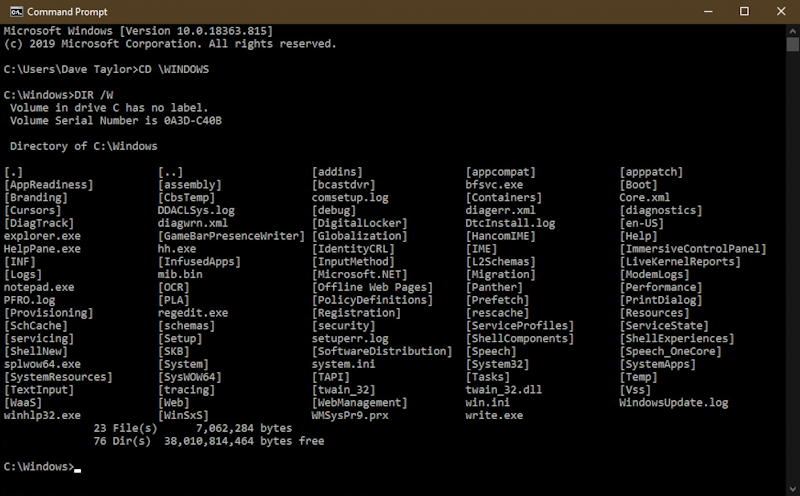
F9: Enters a previous command by entering a number associated with that line.Instead, it goes all the way to the start. F8: Similar to F5, but doesn’t stop at the end of your command history in the session.F7: Opens a list of previously entered commands.F5: Similar to F3, but lets you cycle through previous commands.F4: Auto-deletes the current command up to a specified character.F2: Copies the current command up to a specified character.
 F1: Tap or hold this key to retype your last command letter by letter. Here’s what each function key on your keyboard does in CMD: F1 to F9 Keys are Shortcuts in CMDĪll the function keys on your keyboard are also shortcuts for various Command Prompt functions. Use this command to save the drivers list to a document:ĭriverquery > C:\Users\YourUsername\Desktop\driver.txt 6. If you want, you can also copy this output into a text file for easy viewing later. This will encrypt all the files that were inside the folder. Once you’re done, type “Cipher /E“, and hit Enter. This can be done by using the “cd” command. Launch the Command Prompt, and change your working directory to the folder where your files are. Encryption is a way to prevent others from taking a peek at your data, and it’s a really important part of ensuring (to some extent, at least), that your files are only yours. With this simple Command Prompt trick, you can easily encrypt files on your Windows PC. One of the most useful things that you can do using the Command Prompt, is encrypting your sensitive data. Always Run Command Prompt as Administrator.
F1: Tap or hold this key to retype your last command letter by letter. Here’s what each function key on your keyboard does in CMD: F1 to F9 Keys are Shortcuts in CMDĪll the function keys on your keyboard are also shortcuts for various Command Prompt functions. Use this command to save the drivers list to a document:ĭriverquery > C:\Users\YourUsername\Desktop\driver.txt 6. If you want, you can also copy this output into a text file for easy viewing later. This will encrypt all the files that were inside the folder. Once you’re done, type “Cipher /E“, and hit Enter. This can be done by using the “cd” command. Launch the Command Prompt, and change your working directory to the folder where your files are. Encryption is a way to prevent others from taking a peek at your data, and it’s a really important part of ensuring (to some extent, at least), that your files are only yours. With this simple Command Prompt trick, you can easily encrypt files on your Windows PC. One of the most useful things that you can do using the Command Prompt, is encrypting your sensitive data. Always Run Command Prompt as Administrator. 
List Every Driver Installed on Your Windows 10 PC.Change the Title of the Command Prompt Window.Change the Prompt Text in Command Prompt.Change the Color of the Command Prompt Window.






 0 kommentar(er)
0 kommentar(er)
